Chem Collective Virtual Labs
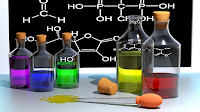
Chem Collective is a project designed and maintained by Carnegie Mellon University’s chemistry department and the National Science Digital Library. On Chem Collective you will find virtual labs for chemistry experiments, simulations, visualizations, tutorials, and auto-graded problems. Students and teachers can search the site by resource type or by chemistry topic. Applications for Education Chem Collective […]
Best of 2022 – Periodic Table of Videos

As I do at this time every year, I’m taking the week off to ski and play with my kids, shovel snow, and generally not think about work. I have some of the most popular posts of the year scheduled to republish this week. New posts will resume in the new year. For years I […]
Interactive Math & Science Simulations for Online and Offline Use

PhET is one of my favorite resources for math and science teachers. In fact, it’s included as one of my Best of the Web picks for 2022. One of the many things that I like about PhET math and science simulations is that you can use them with or without an internet connection. That’s something […]
The Science of Pizza, Diets, and the Esophagus

Last week two of my favorite YouTube channels, TED-Ed and SciShow Kids, published new videos on the topics of food and weight loss. And those videos reminded me of the Reactions playlist of 76 videos about food science including Better Pizza Through Chemistry. Between the three videos there are lessons for elementary school, middle school, […]
A Database of Solutions to Common Stains

Stain Solutions is a handy website developed by Susan Taylor at the University of Illinois Extension. The site is a database of dozens of common stains and the solutions to remove them. Click on a stain in the chart and you will be taken to a list of the ingredients needed to make a solution […]
How Do Fireworks Work? – Another Question from my Daughters

Tomorrow is the Fourth of July and that means there will be fireworks displays in towns all over the United States. My little town is having small display that we’ll actually be able to see from our backyard. And this year my kids are old enough to stay up to see the fireworks display. Of […]
A TED-Ed Lesson for Every Element on the Periodic Table

For years I have referred readers to the University of Nottingham’s Periodic Table of Videos. That table provides a video about every element that is in the Periodic Table. A few years ago the producers of the Periodic Table of Videos partnered with TED-Ed to create lessons about every element in the Periodic Table. TED-Ed’s Periodic Videos […]
A Lesson About Gas
Whenever I fill up my car’s gas tank I’m thankful that I don’t have a car that requires high octane gasoline. What is high octane gasoline anyway? Is is really significantly better than regular unleaded gasoline? And why is gasoline “unleaded?” Those questions and more are answered in this relatively new Reactions video. Applications for […]
CanvasMol – Online 3D Models of Molecules
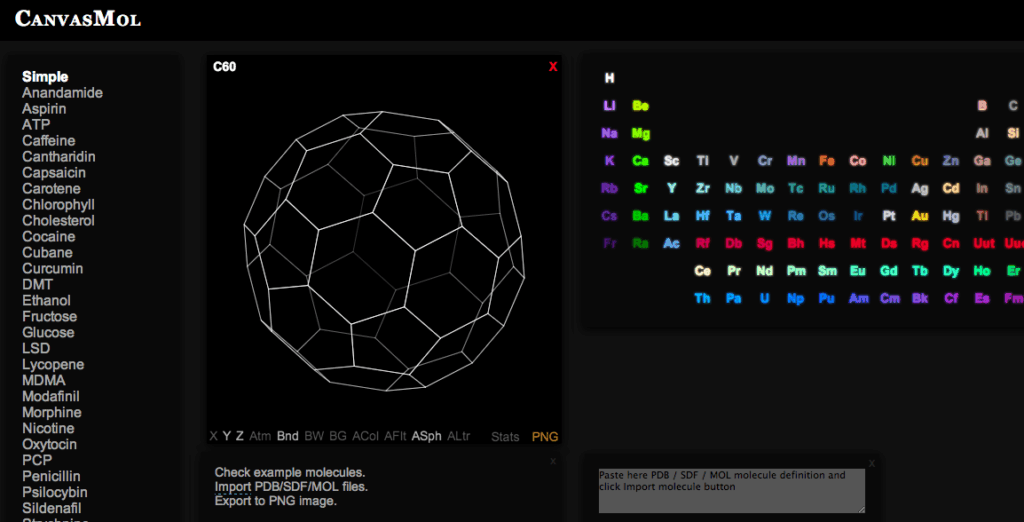
Canvas Mol is a website that provides 3D, interactive, rotating models of simple and complex molecules. There are more than fifty models of relatively common molecules like glucose, fructose, and morphine. Each model can be altered to show or not show bonds, to show or not show individual atoms, and to rotate on the X,Y, or […]
The Science of Fireworks

Today is New Year’s Eve and while there aren’t any fireworks displays planned for my little town, the nearby ski resort will have a little display. Fortunately, the display is planned early in the evening so my kids and I can see it without staying up past our bedtime. This is the first year that […]
See the Elements Present in Common Products – The Periodic Table in Pictures and Words

The Periodic Table of Elements, in Pictures and Words is an interactive site that shows students how each element is used or is present in familiar products. When students click on an element in the interactive display an image of a familiar product or object appears along with a description of the element and its […]
How Batteries Work – And a Resource for Safely Experimenting With Circuits

From cell phones to laptops to toys we and our students rely on batteries for a lot of what we do in our daily lives. But have you ever stopped to think about how batteries actually work? Or have you asked your students to think about it? TED-Ed offers a good lesson that answers the […]
Add Science & Math Simulations to Google Sites

In the latest episode of Two Ed Tech Guys Take Questions & Share Cool Stuff I shared an update about a favorite math and science resource. That resource is PhET. PhET offers more than 150 online, interactive science and math simulations. For a while now PhET has been in the process of switching their simulations […]
Three Lessons on the Chemistry of Coffee

One of the things that I’ve missed the most over the last few months is going to my local coffee shop (Cafe Nomad) and having some of the excellent coffee that they brew. Try as I might, the coffee I brew at home just isn’t the same quality of what they make at the cafe. […]
Thanksgiving Chemistry
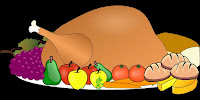
The Thanksgiving Turkey Compilation from the Reactions YouTube channel explains two concepts related to the traditional Thanksgiving turkey. First, it explains how the deep-frying process works and how it helps to make a turkey more flavorful. Second, the video explains why turkey isn’t the primary culprit in making you drowsy after devouring your Thanksgiving meal. Applications for Education This […]
The Science of Grilled Cheese Sandwiches

Like most toddlers, my daughters love grilled cheese sandwiches. I enjoy a good one too. My daughters prefer the ones mommy makes to the ones that I make. Again, I do too. She just seems to have a better grasp of the art and science of making a good grilled cheese. While the art of […]
66 Lessons on the Chemistry of Food and Beverages

Reactions is a YouTube channel that I’ve mentioned in a handful of posts in the past. The channel is produced by PBS Digital Studios and the American Chemical Society. All of the videos on the channel include chemistry lessons based on ordinary, everyday parts of life like food and beverages. In fact, Reactions has a […]
Beaker – Virtually Mix Chemicals on Your Phone or Tablet

Beaker is an iOS and Android app that lets students virtually mix chemicals. In the app students can select chemicals to mix to see how they react to each other. The app also has a virtual match that students can light to see how chemicals react to heat. The most impressive feature of the app […]
Braingenie – Math & Science Practice from CK-12

Braingenie is a free service offered by the CK-12 Foundation. Braingenie provides online math and science practice activities for elementary, middle, and high school students. Braingenie’s library of activities is divided into nine sections and many subsections. The nine sections are 1-8 Math, Brain Math, Algebra I, Algebra II, Precalculus, 6-8 Science, Biology, Chemistry, and […]
The Science of Snow and Ice

How to Survive the Snow and Ice is a new compilation video published on the Reactions YouTube channel. The video features segments about how snow (both natural and man-made) is formed, how ice is made, why saltwater takes longer to freeze than freshwater, and why kitty litter is better than regular sand for getting traction […]
Best of 2018 – The Periodic Table in Pictures and Words

This week is a vacation week for the vast majority of readers of this blog. As I do at this time every year, I’m going to republish some of the most popular posts of 2018. Here’s one from July. The Periodic Table of Elements, in Pictures and Words is an interactive site that shows students […]
Best of 2018 – Interactive Periodic Table of Elements
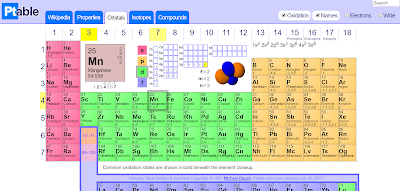
This week is a vacation week for the vast majority of readers of this blog. As I do at this time every year, I’m going to republish some of the most popular posts of 2018. Here’s one from February. There are lots of websites offering interactive or dynamic periodic tables. One that has been around […]
A Science, Math, and History Lesson in One Short Video

Reactions is a YouTube channel produced by the American Chemical Society and PBS Digital Studios. The videos in the channel focus on explaining how chemistry concepts as they relate to things we see every day or to interesting “what if” scenarios. Recently, Reactions published a video to explain how much tea it would take to […]
The Process of Plastic Bottle Recycling

I have t-shirts made from recycled plastic bottles and I bet that your students do too. How did those bottles become the material for t-shirts? Why didn’t the recycling company just make more bottles out of the recycled bottles? And why are those numbers on the bottom of the bottle important? Those questions and more […]
The Chemistry of Fireworks

Tomorrow is Independence Day in the United States. Cities and towns all over the country will feature fireworks displays to celebrate the day. I’m sure that many of you will be enjoying a fireworks display tomorrow. (My kids are too young and my dogs too are too skittish to enjoy fireworks). If after watching a […]
Turning Milk Into Cheese – A Science Lesson

Reactions is a fantastic YouTube channel that science teachers should bookmark. Reactions is produced by PBS Digital Studios and the American Chemical Society. The purpose of the channel is to teach viewers about the role of chemistry in the things they may see in everyday life. For example, earlier this year they produced a video […]
TED-Ed Lessons About Every Element on the Periodic Table

For years I have referred readers to the University of Nottingham’s Periodic Table of Videos. That table provides a video about every element that is in the Periodic Table. Recently, via Lifehacker, I learned that the producers of the Periodic Table of Videos partnered with TED-Ed to create lessons about every element in the Periodic […]
PhET PowerPoint Add-in – Add Science & Math Simulations to Slides

PhET is a free resource that has been popular with science and math teachers for many years. PhET provides free interactive math and science simulations covering topics in physics, chemistry, biology, earth science, and mathematics. In the PhET library you’ll find simulations appropriate for elementary, middle, high school, and university students. PhET even offers a […]
This Periodic Table Shows Elements By Country and Date of Discovery
On Tuesday morning I shared a collection of seven good resources to help students learn the Periodic Table of Elements. The next day Open Culture shared this periodic table visualization that shows the country and year in which each element was discovered. The Periodic Table by country and date of discovery (If you cannot see […]
Seven Good Resources to Help Students Learn the Periodic Table

Learning the periodic table of the elements is not one of my fondest memories of high school, but it was a necessary experience to get through chemistry. My classmates and I memorized all of the elements, at least temporarily, by using flashcards to drill each other. Today, students have more options at their disposal. Here are […]
Ptable – Interactive Periodic Table of Elements

There are lots of websites offering interactive or dynamic periodic tables. One that has been around for many years now is Ptable. Ptable is an interactive display of the Periodic Table of Elements. Place your mouse pointer over an element to access the basic information about it. Click on an element to open a Wikipedia article about […]
The Chemistry of Contrails

Earlier this week I was ice fishing on a lake in northern Maine that just happens to be under the flight path of many airplanes going to and returning from Europe. Being a bit of an aviation geek, I enjoyed guessing at the model of the planes overhead. I could quickly identify 747s, A380s, and […]
The Chemistry of Gluten
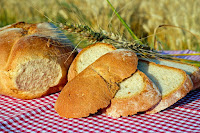
My local grocery store has a whole section of gluten-free bread. I’d wager that your local grocery store has the same. What is gluten? What’s its role in your favorite loaf of bread? Those questions and more are answered in a recently released Reactions video titled The Only Video You’ll Ever Need to Watch About […]
A Large Collection of Virtual Chemistry Labs and Lessons

I didn’t plan for this to become “science week” on Free Technology for Teachers, it has just worked out that I have a backlog of good science resources to share. Chem Collective is another good science resource. Chem Collective is a project designed and maintained by Carnegie Mellon University’s chemistry department and the National Science Digital […]
How Snow Is Made Naturally and by Humans

Every skier knows that natural snow is better than man-made snow. But there will be plenty of both at the Winter Olympics. So what is the difference? And how is snow made? Those questions are answered in the following videos. How to Make Snow (If You’re Not Elsa) is a short video produced by SciShow […]
The Periodic Table in Pictures and Words – Best of 2017

As I do during this week every year, I am taking some time off to relax and prepare for the new year. Every day this week I will be featuring the most popular blog posts of the year. This was one of the most popular posts in July. The Periodic Table of Elements, in Pictures […]
The Science of Snowflakes
Here in western Maine we’re expecting our second real snowstorm of the winter to arrive tonight. This has reminded me of a couple of educational videos that explain the science of snowflakes. The Science of Snowflakes is a TED-Ed video lesson that explains how snowflakes are formed, why they’re all different, and why seem to […]
Chemistry in Slow Motion

The Periodic Table of Videos produced by The University of Nottingham features a video demonstration of the characteristics of each element in the Periodic Table of Elements. Each element in the Periodic Table displayed on the home page is linked to a corresponding YouTube video. The Periodic Table of Videos YouTube channel contains some additional features that teachers […]
EquatIO is Now Free for Teachers

EquatIO is a popular tool that math and science teachers like to use for using handwriting, equation and formula prediction, and graphing in Google Forms, Sheets, Slides, and Drawings. The service is provided by TextHelp who also makes the popular Read & Write add-on for Google Docs. This afternoon TextHelp announced that EquatIO is now […]
National Mole Day
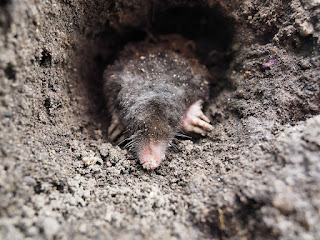
Mole Day was first celebrated in 1991 by a group of chemistry teachers who wanted to encourage students to see that chemistry is interesting and fun and possibly even consider a career in this field. Mole Day is celebrated from 6:02am to 6:02pm on October 23 to commemorate Avogadro’s Number, a basic measuring unit in chemistry. […]
A Chemistry Rap and Five Resources to Help Students Learn the Periodic Table

A few years ago my brother in-law Dr. Nathan Hnatiuk who teaches Organic Chemistry at Cedarville University shared this fun organic chemistry rap video on his Facebook page. It popped-up again in my “Facebook memories” so I thought it was worth passing along again. The video is embedded below. On a related note, here are five […]
In Case You Missed It – The Periodic Table in Pictures and Words
One of the most popular posts of the month so far featured The Periodic Table of Elements, in Pictures and Words. In case you missed it, here’s a video I made to provide an overview of the site. Applications for Education As I mentioned last week, The Periodic Table of Elements, in Pictures and Words could be a […]
The Periodic Table in Pictures and Words

The Periodic Table of Elements, in Pictures and Words is an interactive site that shows students how each element is used or is present in familiar products. When students click on an element in the interactive display an image of a familiar product or object appears along with a description of the element and its […]
The PeriodicTable of Videos – An Update from the Archive

Earlier this week an email from a reader prompted me to take a look back through my archives for chemistry-related resources. The Periodic Table of Videos is one that popped-up that I hadn’t thought about in years. In fact, it has been nine years since I wrote about it. In that time a lot of […]
Ingredients – A New Series About the “Stuff Inside Your Stuff”

Ingredients is the title of a new National Geographic video series about the ingredients that go into creating common products like toothpaste, nail polish, and chewing gum. The videos feature George Zaidan examining and explaining the functions of the ingredients. After the explanation of the ingredients George attempts to create the product himself in a […]

